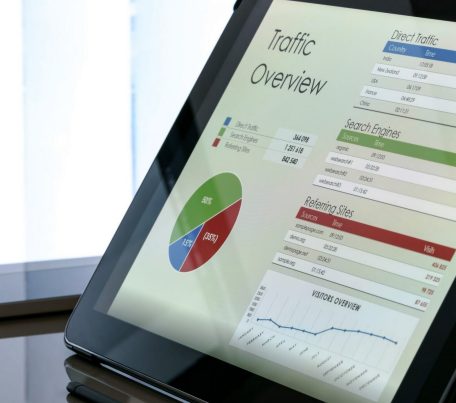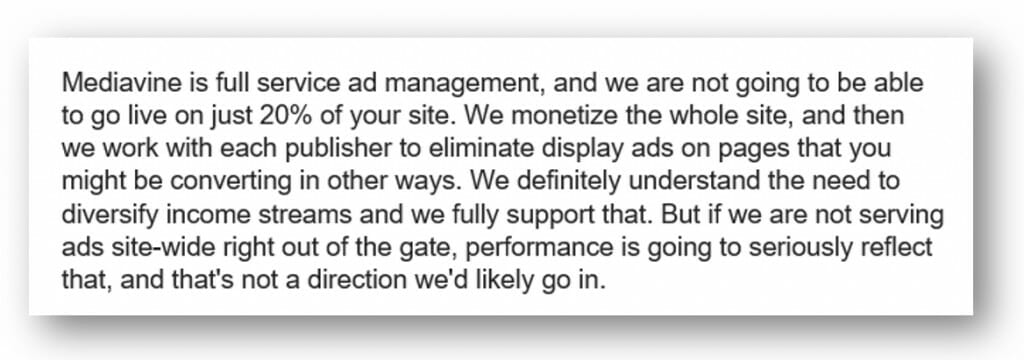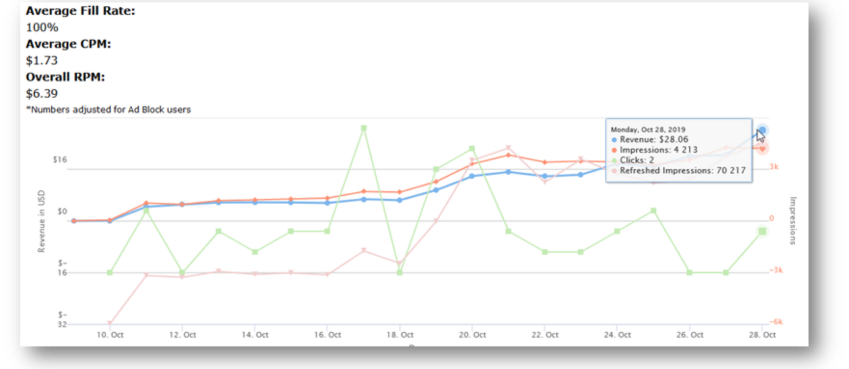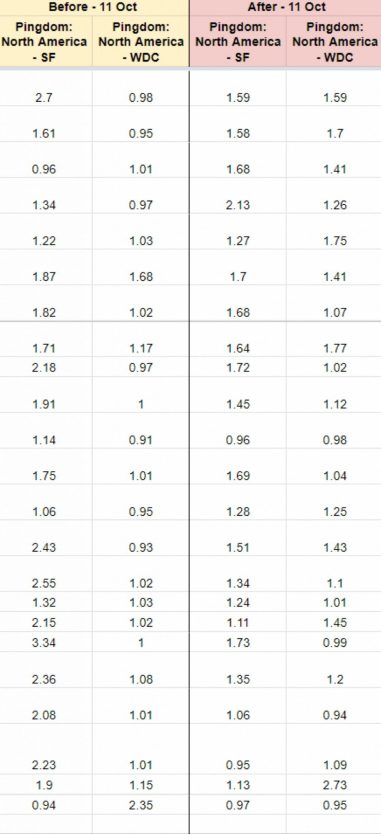You like money, right? Do you like cashing in a second time on websites and content you’ve already developed? I sure do, that’s why I designed a case study to determine whether it’s possible to turn a healthy affiliate site into a better earner by monetizing it through display ads.
I get it, you’re immediately skeptical, right?
Of course, you are. Multiple income streams are always awesome, but why would you ever monetize a site in a way that might get in the way of how it pays you now? Most affiliate marketers shun ads because their sites make money by drawing people directly to affiliate links, not ads.
People on the affiliate side rightfully ask: Won’t ads distract people away from the links to my affiliate products? Won’t I lose the precious trust of my readers? Will my site load slower?
Those concerns are exactly what I set out to test in this latest case study.
In the following article, you’re going to learn what effect the introduction of ads had on load time, traffic, earnings, and other site growth factors.
Finally, you’ll walk away with a definitive answer on if display ads are a valuable addition to your affiliate content sites.
For those who prefer video content, here’s a video summary of what you’re about to read below.
For those that like the details, the numbers, and more, carry on…
First, a quick overview of what display ads are and how they fit into the affiliate model.
What are Display Ads?
Though you likely filter out a lot of display ads you see every day, they are far too common to ignore completely. Google Ads remains the largest ad platform serving the internet and has only gotten better at delivering targeted ads wherever you go.
You’ll see them on most sites. As an off-hand example, here’s one that’s been following me around.

Unless you aggressively block scripts with a tool like Adblock, you’ve seen them, and you may have even been tempted to click.
If you haven’t used display ads on your site before, the setup is pretty simple. You apply to an ad network, meet the qualifications, and then follow their custom instructions on how to set up your website to display their ads.
It’s hard to be more specific because the qualifications will vary from website to website. Most will require a minimum level of traffic. AdThrive requires a minimum of 100,000 monthly page views. Smaller networks like Mediavine require 25,000 sessions a month.
They are likely to have content restrictions when it comes to ***** topics and imagery. As you’d expect, the best networks have demanding standards.
If you still need more background on display ads, this short guide can fill in some of the blanks.
Now that we’re all caught up, here’s how my case study rolled out.
The Case Study
The study involved a single affiliate website. After some consideration, I chose a website that was already moderately successful with affiliate offers (earning roughly $8,000 per month).
I had less-valuable sites to choose from, but I chose this one because I wanted a site that had a decent amount of traffic.
Good traffic means sudden trends will stand out from the static. I wanted to have statistically significant behavior to analyze when the ads appeared.

My plan was to place the ads across 37 informational content pieces on the site.
I monetized the informational content pieces with email opt-ins to rewards like ebooks. The ROI for an email address is nowhere near as valuable as links to affiliate products that I placed on other pages.
So even if the worst happened. Even if the ads that ate all the clicks, turned away the readers, or destroyed my site speed… it still would only affect these low ROI informational pages.
The idea that ads only be served to certain pages generated some major resistance from ad networks (more on that in just a bit), but I was able to limit ads to those pages in the end by finding the right ad partner.
Choosing the ad network for the experiment
Two networks came more highly recommended than the others: Ezoic and Media Vine. However, neither one was able to help with the experiment.
Both demanded that I allow ads on all pages or none of them. That wasn’t something I was willing to do, given the risks stated above.
I’ve had people come to me and say that both these networks allow pick-and-choose options, but that’s not my experience.
Actual conversation with Mediavine’s rep:

I really wasn’t enthusiastic about installing the sitewide code updates both platforms require. Once again, I’m trying to protect the site overall, and some ad platforms are known to slow down websites.
Ultimately, I went with a smaller and more flexible network called Newor Media (invitation link). This one came highly recommended by some friends who had longtime ad experience.

Newor claimed that their platform does not impact speed (we will cover how that went in the data). They let me pick and choose the pages that were served by ads.
Ultimately, Newor was also the only platform of the three that was chill with being part of an experiment.
Newor worked with me to determine how the ads would appear on the pages. That resulted in the page layout changes you can see in the next section.

How page layout changed
Layout 1: The Original

This is how the page looks without ads. It’s a layout designed to serve informational content. Just past the first section, my email inline opt-ins are distributed discreetly throughout the page. One was placed just past the introduction, and another every few hundred words.
There’s also an email opt-in on the sidebar, a little further down the page. The inline opt-ins are just written calls-to-action, while the sidebar features a full cover image of the ebook that signups receive.
The page is built to serve email opt-ins. Before Newor placed the ads, there’s nothing that distracted from that purpose.
Layout 2: After the Ads

This is the new template based on the best practices I got from Newor.
I know what you’re thinking: An ad before the title? Yeah, I know. Newor insisted that people wouldn’t be annoyed and that an early ad would set the tone for further ads down the page.
I wanted to keep things simple for the sake of the experiment. So, I followed suit.
Also, I should say that the page layout isn’t as busy as it looks. We spaced out the opt-ins and ads so that you never saw more than one per full page scroll.
In addition to some small horizontal banners spaced through the content, I also approved and set up two larger banners in the sidebar.
Now, the ads were ready to go, and the study was about to begin. To make sure it meant something, I tracked as much data as I could.
What was measured?
I collected data on several website factors that I considered essential to my affiliate site’s revenue and performance. To understand how deep the impact was when ads showed up, I needed to know…

- Email Subscriber rate impact (would my conversions suffer?)
- Speed performance (did the website slow down?)
- Rankings (Did our pages start dropping?)
- Traffic (Are fewer people coming through)
- Time-on-page (Are they spending less time on the page?)
- Earnings from ads (Was it all worth it?)
Some of these factors have less priority than others. Speed is one of the highest priorities.
The Results
Speed
To determine this, we performed a cascade of requests for each of the 37 test pages using Pingdom.
That allowed us to reach out from both a San Francisco and Washington D.C. server and see how the load time changed.
Full Data for Showing Off
Actually Useful Summary:

As you can see, there isn’t much evidence of a problem here. Sure, there’s a dip, but it’s matched by a dramatic improvement from the other coast.
If I saw a deviation of say, 3 seconds, I would be panicking. But it’s nothing close to that. These results are firmly in the “who cares” territory.
Next, I needed to track how search engines were responding to the changes.
Rankings CORRUPTED
Well, this is awkward. It turns out, I forgot to tell Google that I was running an experiment, and they decided to drop the BERT algorithm update right in the middle of it.
This event colored all of my tracking data, but it isn’t all bad news.
BERT loved this site. It gave my site such a big hug that I can’t separate what benefits came from the update and what came from our experiment.

In all honesty, I didn’t think that adding ads would affect ranking much unless combined with a lot of other downward trends.
I saw my first downward trend while tracking time visitors spent on-page.
Results: Time on Page
The results I was tracking were measured 7 and 14 days after I introduced ads to the site.
| Before | After 7 Days | After 14 Days | Impact | |
|---|---|---|---|---|
| Time on Page | 3:14 | 2:57 | 2:36 | -19.5% |
Well, this doesn’t seem good. People are spending 20% less time-on-page.
It’s important to remember that this doesn’t always signal visitor disgust. This may have happened because the ads provide colorful new portals to exit the page.
I quickly checked the bounce rate and found people weren’t bouncing back to SERPs in general. The bounce rate did not increase.
That’s a good sign. Google doesn’t like bouncing or pogo-sticking, which indicates I didn’t serve the visitor. People moving on by moving through is good for the site’s health.
Overall it’s not bad, but before we make our final impressions of the test, let’s take a quick look at how visitors are behaving even with shorter visits.
Results: Subscriber Rate
Here’s how the subscriber rate looked after the end of the 14-day cycle.
| Before Ads | After Ads | Improvement | |
|---|---|---|---|
| Signups | 96 | 128 | |
| Visitors | 15199 | 15668 | |
| Signup Rate | 0.623% | 0.816% | 29.3% |
Wait, did subscription numbers improve after the introduction of ads? Yes, they did. That’s not a typo.
The experiment may have left questions as far as traffic goes, but that ads emboldened visitors seems clear.
Ads themselves may be a visual trust signal.
Who uses ads?
Most sites you visit. News sites like the New York Times do – major health information sites like WedMD do.
In fact, affiliate sites are some of the most notably ad-free sites on the internet.
Maybe adding them creates a little trust?
Earnings
It takes a while for Newor’s algorithm to ramp up, but by the end of the test, earnings settled at about $28/day.

After the test conclusion, the algorithm continued to optimize, eventually settling at around $40 per day.
That’s essentially $1200/month in additional revenue with no extra effort.

Bear in mind, when flipping websites, this $1200 monthly profit gain essentially results in a $48,000 increase in the website’s value if we’re using a 40x multiple.
I’ll take that any day.

Conclusion: Should You Apply Ads to Your Whole Site?
What we’ve learned is that an affiliate site can survive and even thrive after a transition to ads. Conventional wisdom tells us that ads should make site interactions less common. In this case study, I saw the opposite.

There are three conclusions you can take away from this case study if you’re deciding whether to apply ads to your website or not.
- Newor’s ads didn’t affect site speed
- Time on page was affected negatively, but bounce wasn’t
- MOST IMPORTANTLY: email optins increased, implying that affiliate clicks might increase as well.
By the same logic, we can assume that affiliate content will follow suit. However, that’s going to take a lot more testing, which is why I’ve already started.
If you want to be one of the first ones to see phase two, make sure you sign up for my mailing list.
Got Questions or Comments?
Join the discussion here on Facebook.


